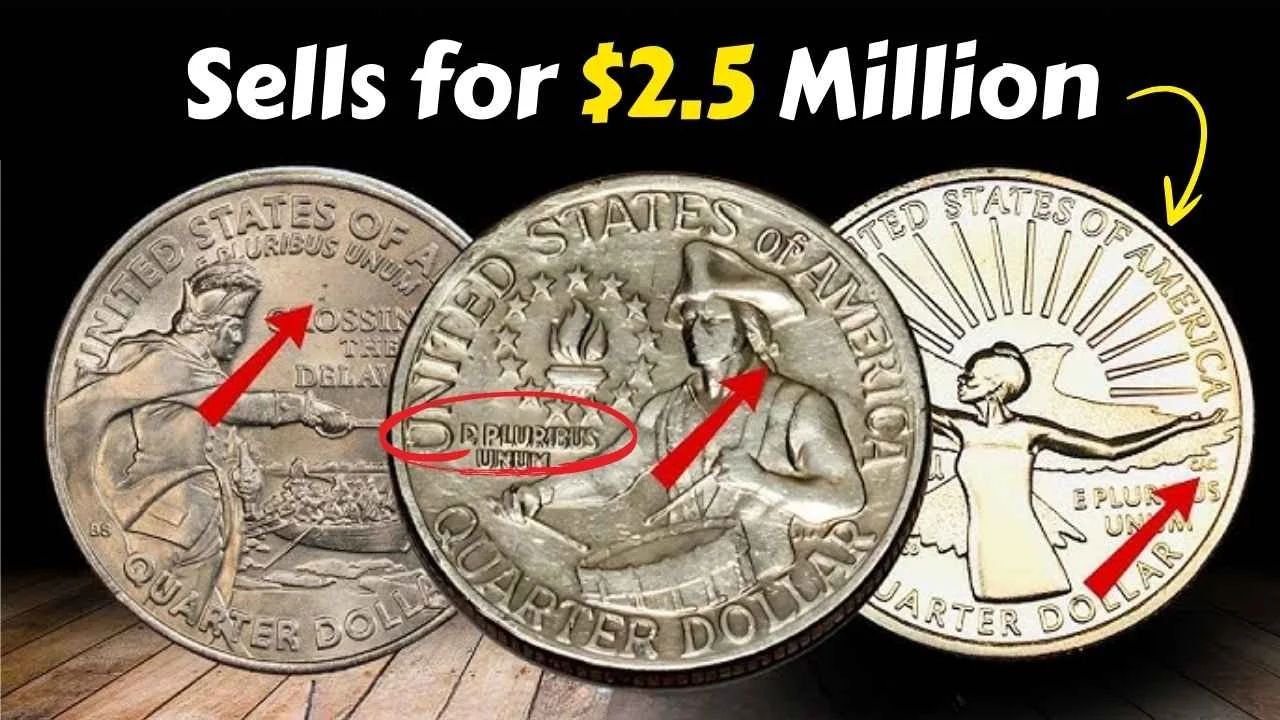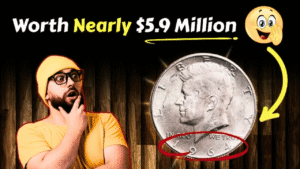What if a quarter in an old desk drawer could make you a millionaire? A rare 1976 Bicentennial Quarter with a double die error recently sold for $2.5 million, proving that pocket change can hide incredible treasures. Minted to celebrate America’s 200th birthday, this coin’s unique error and historical charm make it a collector’s dream. Could you have one? Let’s explore how to spot this valuable quarter and why it’s worth a fortune!
The Story Behind the 1976 Bicentennial Quarter
A Coin for a Milestone
In 1975 and 1976, the U.S. Mint produced over 1.6 billion Bicentennial Quarters to mark 200 years of American independence. Unlike standard quarters, these feature a dual date (1776–1976) and a colonial drummer boy on the reverse, designed by Jack L. Ahr. While most are worth 25 cents, rare errors elevate some to millions.
The Double Die Error
A double die error occurs when a coin’s die is struck twice, slightly misaligned, creating a doubled effect on text or images. On the 1976 quarter, doubling is most noticeable on “LIBERTY,” “IN GOD WE TRUST,” or the date. Only a handful of these error coins exist, making them ultra-rare.
A Collector’s Holy Grail
The $2.5 million quarter, found in a Virginia desk drawer, featured clear doubling and near-mint condition (MS-65). Its rarity and pristine state sparked a bidding war at a 2024 auction, highlighting the coin’s numismatic allure.
Why Is the 1976 Bicentennial Quarter So Valuable?
Rarity and Errors
With only a few known double die obverse (DDO) coins from the Philadelphia Mint (no mint mark), their scarcity drives value. The FS-101 and FS-102 varieties, with doubling on “LIBERTY” or Washington’s profile, are especially prized. High-grade examples can fetch thousands to millions.
Auction Records
| Error Type | Sale Year | Sale Price | Auction House |
|---|---|---|---|
| Double Die Obverse | 2024 | $2,500,000 | Heritage Auctions |
| Off-Center Strike | 2023 | $900,000 | Stack’s Bowers |
| Silver Proof (PR-70) | 2019 | $13,500 | Heritage Auctions |
| Double Denomination | 2020 | $9,200 | GreatCollections |
| Filled “D” Error | 2021 | $1,500 | eBay |
Silver vs. Clad Composition
Most 1976 quarters are copper-nickel clad (5.67 grams), but San Francisco Mint (“S” mint mark) produced 40% silver versions (5.75 grams) for collectors. Silver proofs in pristine condition can sell for $500–$20,000, while errors in clad coins, like the $2.5 million DDO, steal the spotlight.
How to Spot a Valuable 1976 Bicentennial Quarter
Key Features to Check
- Date: Look for “1776–1976” on the obverse.
- Double Die Error: Use a magnifying glass to check for doubling on “LIBERTY,” “IN GOD WE TRUST,” or the date. FS-101 shows doubling on “LIBERTY,” while FS-102 affects Washington’s profile.
- Mint Mark: No mint mark (Philadelphia) is where DDO errors are found. “D” (Denver) or “S” (San Francisco) may indicate other valuable varieties.
- Reverse Design: Ensure the drummer boy and torch are crisp. Errors like filled details or off-center strikes add value.
- Condition: Pristine, uncirculated coins (MS-65 or higher) are worth more.
Other Valuable Errors
- Off-Center Strikes: Designs shifted 10–50% off-center, with visible dates, can fetch $500–$900,000.
- Filled “D” Error: A clogged die obscures the “D” mint mark, valued at $100–$1,500.
- Double Denomination: Quarters struck over other coins (e.g., dimes) can sell for $5,000–$10,000.
Authentication Tips
Counterfeits are common, so verify with PCGS or NGC grading services. Look for security features like reeded edges and consistent weight. Avoid cleaning coins, as it reduces value.
Where to Find Your Million-Dollar Quarter
Everyday Places to Look
- Pocket Change: Check quarters from stores, vending machines, or tip jars.
- Bank Rolls: Request rolls of quarters from banks and inspect each coin.
- Old Collections: Search family coin jars, attics, or inherited estates.
- Coin Shows: Unsearched lots at shows or online platforms like eBay may hide treasures.
Hunting Tips
- Magnify Details: Use a 5x–10x magnifying glass or smartphone camera to spot doubling.
- Weigh the Coin: Silver quarters (5.75 grams) are heavier than clad (5.67 grams). Use a precise scale.
- Join Communities: Reddit’s r/coins or PCGS forums offer tips and error guides.
- Store Safely: Use plastic holders to protect potential finds from damage.
Selling Your Coin
If you find a rare quarter, get it graded by PCGS or NGC to confirm authenticity and condition. Sell through reputable auction houses like Heritage Auctions, Stack’s Bowers, or GreatCollections, or list on eBay with clear photos and grading certification.
The Cultural Impact of Bicentennial Quarters
A Symbol of American Pride
The 1976 Bicentennial Quarter, with its drummer boy and dual date, captures the spirit of America’s 200th anniversary. Its nostalgic design resonates with collectors and history buffs alike.
Sparking Treasure Hunts
The $2.5 million sale, alongside finds like a $500,000 DDO in a 2021 bank roll, has fueled nationwide searches. Social media buzz on platforms like TikTok and X keeps the hunt alive, with collectors sharing images and tips.
A Growing Market
Error coins are increasingly popular, with a 600% surge in Bicentennial Quarter submissions to grading services since 2024. The combination of rarity, history, and potential wealth makes these coins a numismatic phenomenon.
FAQs About the 1976 Bicentennial Quarter
1. What makes a 1976 Bicentennial Quarter valuable?
Rare errors like double die obverse, off-center strikes, or silver composition increase value. A DDO quarter sold for $2.5 million due to its rarity and condition.
2. How do I spot a double die error on a 1976 quarter?
Use a magnifying glass to check for doubling on “LIBERTY,” “IN GOD WE TRUST,” or the “1776–1976” date. Clear doubling, especially in FS-101 or FS-102 varieties, is valuable.
3. Are all 1976 quarters worth millions?
No, most are worth 25 cents. Only those with rare errors (e.g., double die) or silver composition in high grades (MS-65+) fetch thousands or millions.
4. Where can I sell a rare 1976 Bicentennial Quarter?
Get it graded by PCGS or NGC, then sell through auction houses like Heritage Auctions, Stack’s Bowers, or online platforms like eBay.
5. Can I still find a valuable 1976 quarter in circulation?
Yes, rare error coins may still be in pocket change, bank rolls, or old collections, though the chances are slim. Check carefully for errors or silver content.
Conclusion: Your Quarter Could Be a Hidden Treasure!
The 1976 Bicentennial Quarter proves that everyday coins can hold life-changing value. With a double die error fetching $2.5 million, this iconic coin is more than spare change—it’s a piece of American history. Grab a magnifying glass, check your quarters for doubling or errors, and visit pcgs.com or ngccoin.com to verify finds. Whether in a desk drawer or a tip jar, your next quarter could be worth millions. Start your treasure hunt today!




